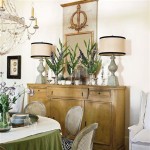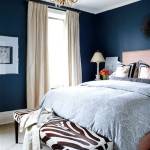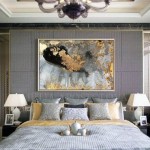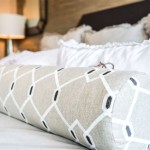How to Decorate a Living Room Table
The living room table, often a central feature in the living space, serves as both a functional surface and a decorative anchor. Effective table decoration should harmonize with the overall aesthetic of the room, reflecting the homeowner's style and providing a visually appealing focal point. The art of decorating a living room table lies in balancing functionality with design, creating an arrangement that is both practical and aesthetically pleasing. This article will explore key principles and considerations for transforming a simple table into a stylish and inviting centerpiece.
The first step in decorating a living room table is to consider its function. Is it primarily a surface for placing drinks and remote controls, or is it intended to be a decorative showcase? Understanding the table's primary purpose will guide the selection of items and the overall design approach. If the table needs to be readily available for practical use, avoid cluttering it with too many decorative objects. Conversely, if the table is more decorative than functional, a more elaborate arrangement may be appropriate.
The size and shape of the table are also crucial factors in determining the decorative scheme. A large, rectangular coffee table can accommodate a more substantial display than a small, round side table. Similarly, the style of the table itself will influence the choice of decorative items. A modern, minimalist table may benefit from a simple, uncluttered arrangement, while a more ornate, traditional table can handle a more elaborate design.
Ultimately, the success of a living room table decoration hinges on careful planning, thoughtful selection of items, and a keen eye for balance and harmony. By considering the function, size, and style of the table, homeowners can create a visually appealing and functional centerpiece that enhances the overall ambiance of their living room.
Establishing a Foundation: The Anchor Element
The anchor element serves as the focal point of the table arrangement and provides a sense of visual stability. This element is typically the largest or most prominent item on the table and helps to ground the overall design. The selection of the anchor element should be deliberate and aligned with the desired aesthetic. The anchor element functions as the starting point for building the rest of the design.
Common anchor elements include: a large coffee table book, a decorative tray, a sculptural object, or a floral arrangement. The choice depends largely on the style of the room and the homeowner's personal preferences. A large coffee table book can add a touch of sophistication and intellectual curiosity. A decorative tray can provide a practical surface for organizing smaller items and adding visual interest. A sculptural object can serve as a striking statement piece, while a floral arrangement can bring a touch of nature and vibrancy to the space.
The size of the anchor element should be proportional to the size of the table. A large table can accommodate a larger anchor element, while a smaller table requires a more modest selection. The placement of the anchor element is also important. It should be positioned in a way that creates balance and visual appeal. For a rectangular table, the anchor element is often placed slightly off-center to create a more dynamic composition. For a round table, the anchor element can be placed in the center or slightly off to the side.
The anchor element should also complement the other elements in the room. The color, texture, and style of the anchor element should coordinate with the existing decor. For example, if the living room has a modern aesthetic, a sleek, minimalist sculpture would be a suitable anchor element. If the living room has a more traditional aesthetic, a large, ornate tray would be a more appropriate choice. The anchor element is essential for establishing a balanced and visually appealing arrangement.
Consider using a stack of books as an anchor. Choose books with visually appealing covers or spines, and arrange them in a neat stack. Top the stack with a small decorative object, such as a candle, a vase of flowers, or a small sculpture. This creates a layered and visually interesting arrangement. Another practical option is to use a tray. Choose a tray that complements the style of the room, and use it to organize smaller items, such as remote controls, candles, or coasters. Arrange the items in a visually appealing way, and consider adding a small decorative object to complete the look. The key is to choose an anchor element that is both visually appealing and functional.
Creating Layers and Visual Interest: The Supporting Elements
After establishing the anchor element, the next step is to add supporting elements that complement and enhance the overall design. These elements help to create layers, add visual interest, and provide a sense of depth to the table arrangement. The supporting elements should be carefully selected to coordinate with the anchor element and the overall style of the room. The supporting elements contribute to the story of the table arrangement.
Common supporting elements include: candles, small vases, decorative bowls, coasters, and small sculptures. Candles can add a sense of warmth and ambiance to the living room. Small vases can be used to display fresh flowers or greenery, adding a touch of nature to the space. Decorative bowls can be used to hold small items, such as potpourri or decorative stones. Coasters are a practical addition to any living room table, protecting the surface from spills and stains. Small sculptures can add a touch of personality and artistic flair to the arrangement.
When selecting supporting elements, it is important to consider their size, shape, and color. The supporting elements should be proportional to the size of the table and the anchor element. They should also be chosen to create a sense of visual balance and harmony. For example, if the anchor element is a large, rectangular coffee table book, the supporting elements should be smaller and more varied in shape. If the anchor element is a tall, cylindrical vase, the supporting elements should be shorter and wider.
The placement of the supporting elements is also important. They should be arranged in a way that creates visual interest and depth. Consider grouping the supporting elements in clusters, or arranging them in a line along the edge of the table. Experiment with different arrangements until you find one that is visually appealing. The supporting elements should complement the anchor element and contribute to the overall aesthetic.
Think about incorporating items with varying heights. This will add dimension and prevent the arrangement from appearing flat. Use candlesticks of different heights, or stack books to create different levels. Incorporate textures to add visual interest. Use a combination of smooth and rough textures, such as a smooth ceramic vase paired with a rough wooden coaster. The contrast in textures will make the arrangement more visually appealing. Don't be afraid to experiment with different arrangements. The key is to find a combination of items that you find visually appealing and that complements the style of your living room.
Maintaining Balance and Harmony: The Finishing Touches
The final step in decorating a living room table is to add the finishing touches that tie the entire arrangement together and create a sense of balance and harmony. These finishing touches can be subtle, but they can make a significant difference in the overall look and feel of the table. The finishing touches should complement the anchor element and supporting elements, enhancing the overall aesthetic of the room.
Common finishing touches include: adding a throw blanket, adjusting the lighting, and incorporating personal touches that reflect the homeowner's style and personality. A throw blanket can add a touch of warmth and comfort to the living room. Adjusting the lighting can help to create a more inviting and relaxing atmosphere. Incorporating personal touches, such as family photos or travel souvenirs, can add a unique and meaningful element to the arrangement.
When adding finishing touches, it is important to consider the overall color scheme and style of the room. The finishing touches should complement the existing decor and create a sense of visual cohesion. For example, if the living room has a neutral color scheme, adding a pop of color with a throw blanket or a vase of flowers can create visual interest. If the living room has a modern aesthetic, adding a sleek, minimalist sculpture can enhance the overall style.
The key to adding successful finishing touches is to pay attention to detail and to experiment with different arrangements until you find one that is visually appealing and complements the overall aesthetic of the room. The finishing touches should enhance the overall look and feel of the table and create a welcoming and inviting atmosphere in the living room. It shows the personality of the homeowner to the living room table.
Consider adding a few small, personal items to the table. This could be a framed photo, a small piece of art, or a souvenir from a trip. These items will add a personal touch to the arrangement and make it feel more unique. Ensure that the lighting in the room is adequate to highlight the table arrangement. Consider adding a lamp to the table or adjusting the existing lighting to create a more inviting atmosphere. Step back and assess the overall balance and harmony of the arrangement. Make any necessary adjustments to ensure that the table is visually appealing and complements the overall aesthetic of the room. A final, critical step is to ensure the surface remains practical for living room use. Adding coasters, trays, and other functional, yet aesthetic, components will make the space usable and stylish.

2024 How To Style Your Coffee Table Like A Pro 3 Easy Steps Trending Decor

Coffee Table Decor Ideas And Trends For 2025

Fall Coffee Table Decor Ideas Easy And Stylish Calypso In The Country

Coffee Table Decor Ideas How To Style Your

6 Thrifty Cottage Coffee Table Decor Beautiful Simplicity Open Doors Hearts

27 Coffee Table Decor Ideas How To Style A Modern

Spring Coffee Table Decor Ideas To Elevate Your Living Room Style Perfecting Places

Coffee Table Decor Ideas How To Style Your

The Basics Of Coffee Table Styling Shades Blue Interiors

Coffee Table Styling Decor Gold Designs








